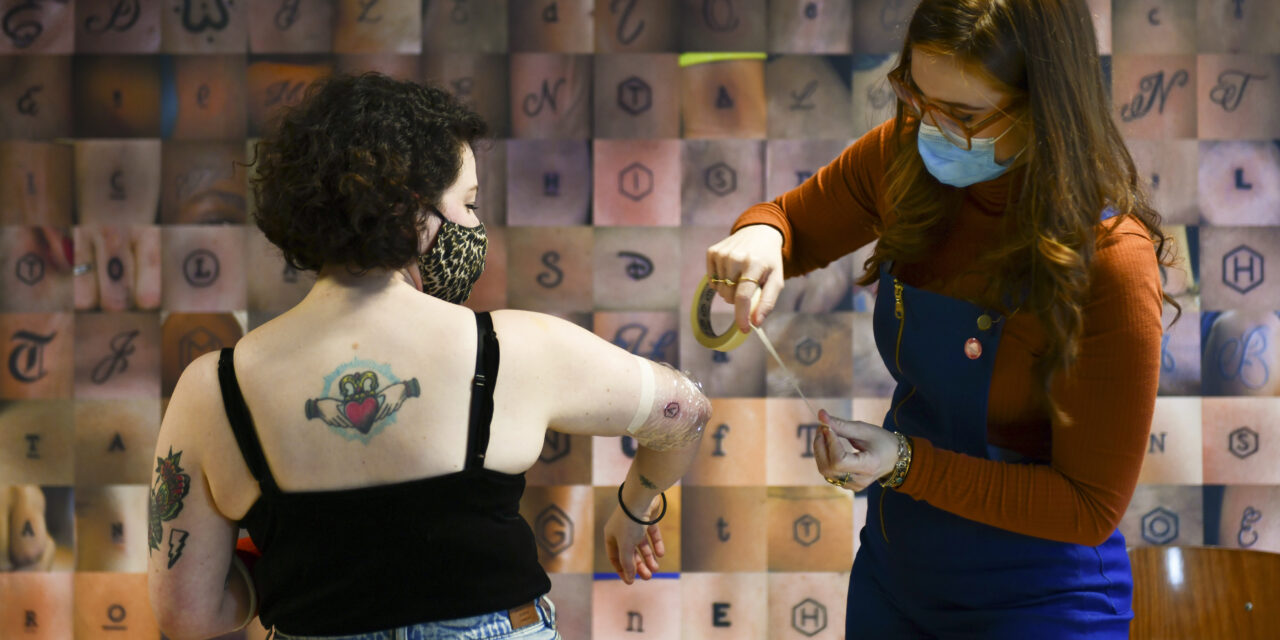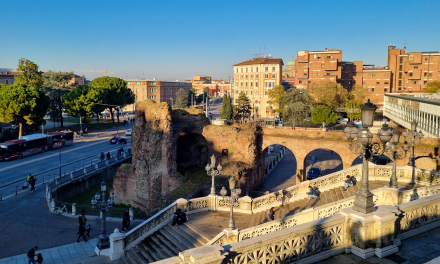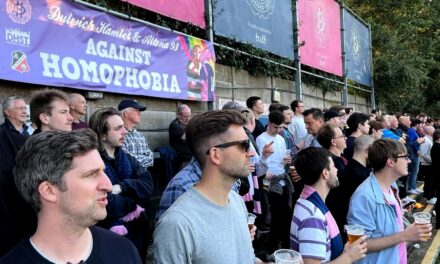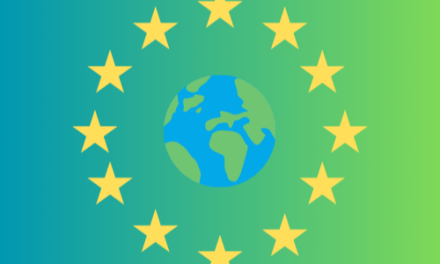Human rights violations have been reinforced by the current COVID-19 crisis, with disturbing developments as a result. To keep the conversation about human rights alive, the aim of the Human Rights Foundation is tattooing the entire Universal Declaration of Human Rights on the skin of participants around the globe.
In order to raise awareness on the topic of human rights, the Human Rights Tattoo foundation aims to encourage conversations in an inclusive and accessible way through their living work of art. The shocking reality and meaning of human rights suddenly struck founder and artist Sander van Bussel when his dear Kenyan friend, fellow artist and human rights activist Steven Nyash was murdered in 2012. Nyash committed himself to the rights of the residents in the neighbourhood Korogocho, one of the largest slums in Nairobi. “It really hit me as I realized how much it matters where you are born and which privileges you carry. That was a massive reality check for me.” In response to the murder of his friend and fellow artist, he wanted to outset positive and powerful action. “The idea soon occurred to me: as if a light bulb above my head lit up all of a sudden. The combination of human rights and tattoos seemed like a perfect fit, as a way of signing the Universal Declaration of Human Rights, only this time with ink on your body.”
Small difference
Using human rights as a guideline in your work creates an opportunity for others to benefit from, Sander explains. “The Human Rights Tattoo foundation has grown into so much more than just an art project. This transcends my role as an artist because the artwork comes together by the community itself: by the tattoo artists who ink the letters, the organizations who set up events and of course the community members who carry a tattooed letter. Behind every tattoo is a truly special person.” The 23-year-old Snigdha Bansal recently got a Human Rights Tattoo. She has been working as a journalist in India and currently lives in Amsterdam for her master studies. “The situation in my home country is getting worse: there are a lot of human rights violations. The office of Amnesty International in India even had to shut down. This has brought a sense of helplessness upon me”, Snigdha admits. Last year, UN experts have raised concerns and called out for urgent action for the “alarming” human rights situation in India. “Back home I read about these injustices every day. As a journalist, you tend to become cynical about all the bad news. It becomes easy to think no real change is happening. However, an initiative like the Human Rights Tattoo project can create a small difference for a better world”, she says.
Enlarge
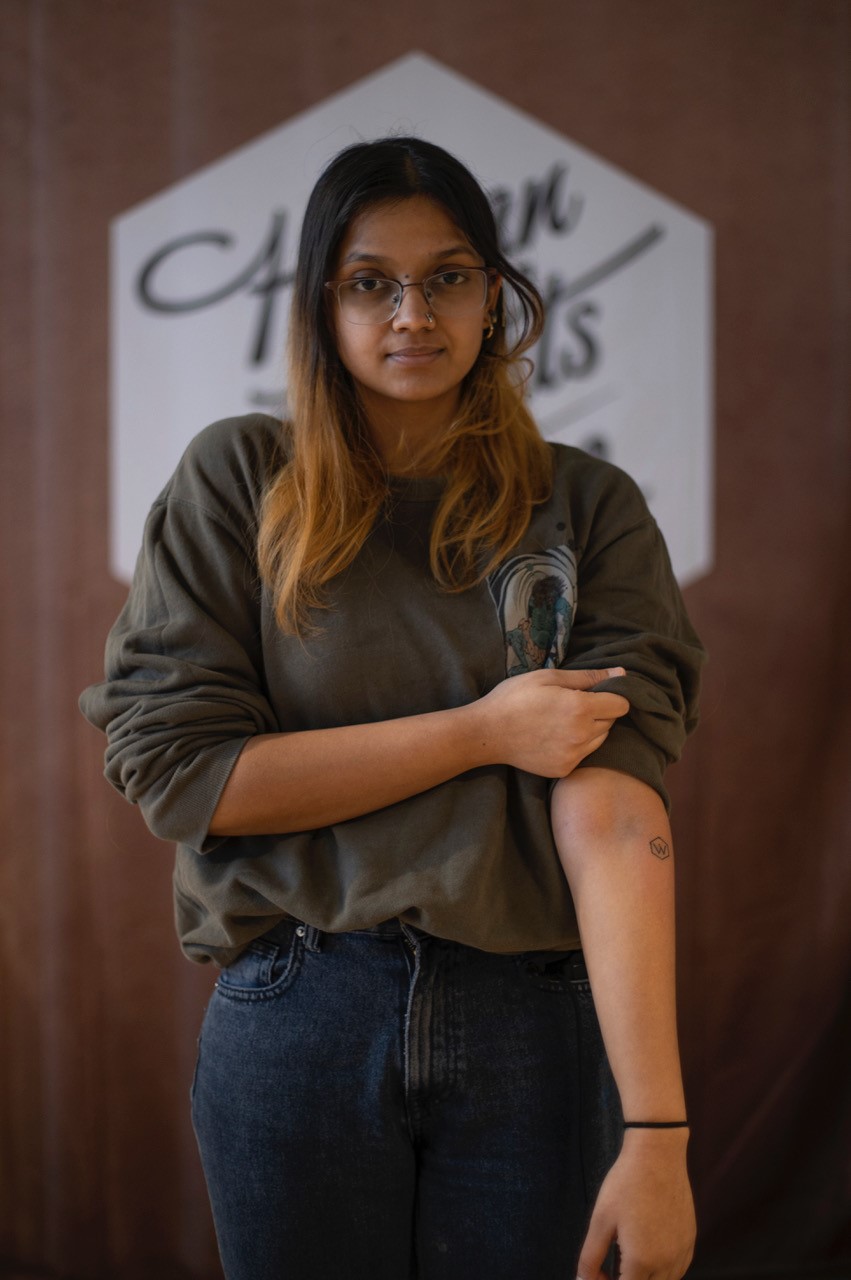
Photograph: Sander van Bussel
Reinforced violations
Disturbing developments in human rights violations have been reinforced by the current COVID-19 crisis, according to Youssef Rahman, senior officer political affairs for the Dutch branch of Amnesty International, an independent non-governmental organization focused on human rights. “Countries with repressive regimes, for example Egypt and China, use this situation to suppress even harder: human rights defenders are thrown into prison without fair trial and citizen journalists reporting on the virus outbreak are being jailed too. However, it’s not only happening in these two countries: you can actually see this trend expanding all over the world, even in western democracies to a lesser extent.” The COVID-19 crisis has exacerbated the vulnerability of the least protected in society, the United Nations stated in their ‘COVID-19 and Human Rights’ report. The instability the pandemic provokes has intensified existing human rights concerns, such as discrimination against certain groups, hate speech, xenophobia, attacks and forced returns of refugees and asylum-seekers, mistreatment of migrants, and sexual and gender-based violence, which is affecting human rights protection in all continents.
Most translated document
The Universal Declaration of Human Rights consists of 6773 letters: 4370 letters have been tattooed so far. “I choose the Universal Declaration because this document lays the foundation for all other international treaties and conventions in regard to human rights”, Sander says. The Universal Declaration of Human Rights (UDHR) was proclaimed by the United Nations General Assembly in Paris on 10 December 1948, right after World War II. The goal was to share a common standard for fundamental human rights that marked out all the economic, social, political, cultural and civic rights for all human beings regardless of race, sex, colour, religion or other characteristics.
“I choose the Universal Declaration because this document lays the foundation for all other international treaties and conventions in regard to human rights”
Seven decades later and the included rights continue to form the basis for all international human rights law. The UDHR document contains 30 articles setting out the rights and freedoms, which include the right to life, liberty and security, the right to freedom of movement, the right to a nationality, the right to freedom of thought, conscience and religion, the right to work, the right to rest and leisure, and the right to education. The Universal Declaration of Human Rights holds the Guinness World Record as the most translated document: it has been translated into 370 languages and dialects.
Corona-proof events
From CEOs to residents of slums and from human rights lawyers to LGBT-activists: if you’re a human being you have what it takes to become part of the Human Rights Tattoo movement, according to their approach statement. “Behind every tattoo is a truly special person”, Sander emphasizes. Participants can sign up by sending in their personal motivation. During the tattoo event, a letter will be assigned to them – in order of the document. Rejection is only permitted in case they have a negative association with it. However, they can choose from a number of fonts and the placement of the letter on their body.
Enlarge
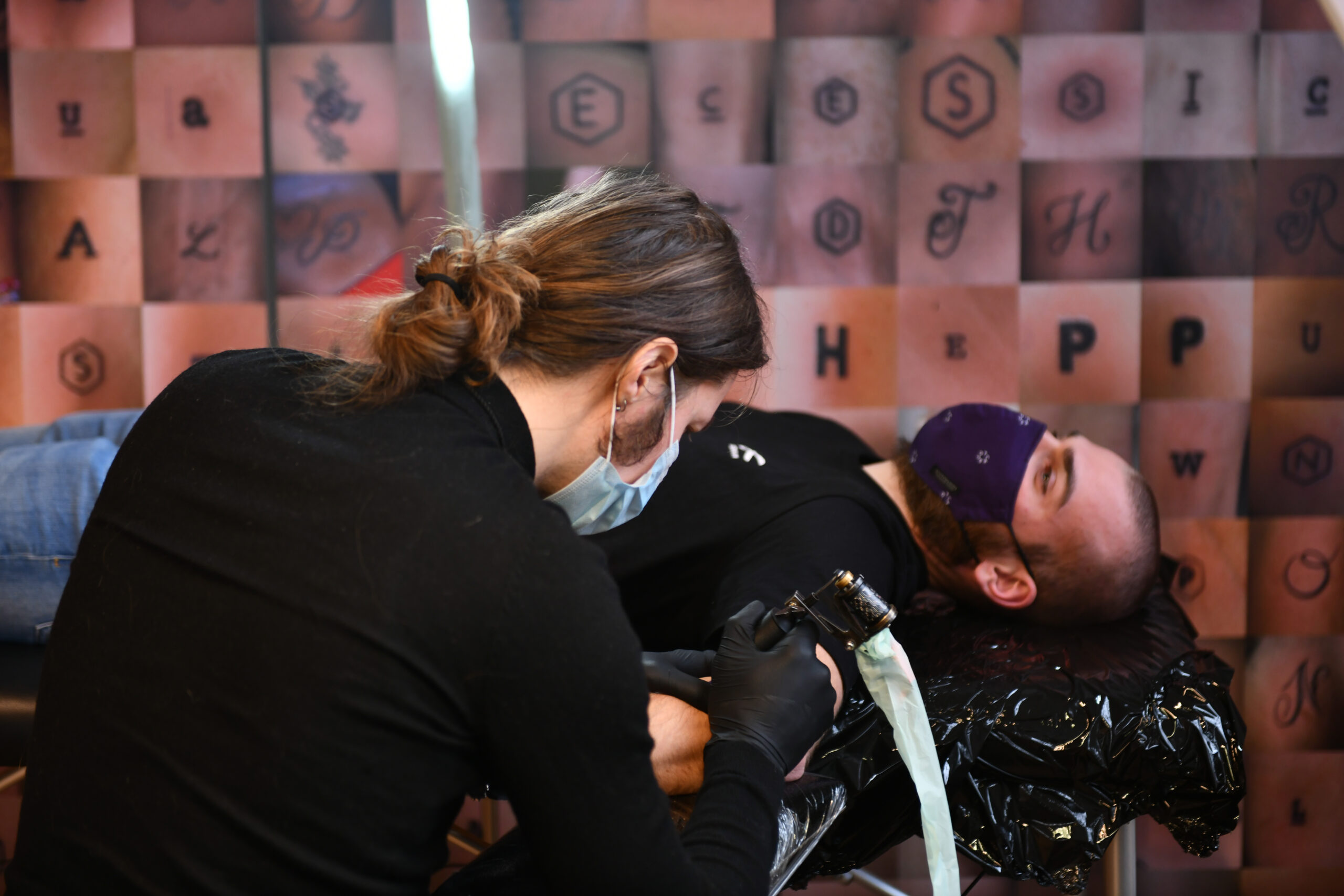
Photograph: Marleen Swaans
Because the Human Rights Tattoo foundation aims to be a universal project wherein diversity is of paramount importance, they have enabled a donation model which makes it possible for participants in countries with lesser means to join. “Unfortunately, the current coronavirus has put a hold on organizing events around the world”, says Niki van Rooijen, general director of the Human Rights Foundation. In the meanwhile, they hosted two corona-proof events in Dutch cities Den Bosch and The Hague in December last year, shortly before the second lockdown was proclaimed in the country.
Symbolic meaning
Even though this is not Snigdha’s first tattoo, she proclaims this one as her most meaningful one. “I often get asked about my tattoos and the meaning behind them. All my other tattoos are just for myself personally, whereas this one is so unique and truly ties into a greater cause that connects me to thousands of other people. It motivates me to commit myself to human rights.” Rahman also participated in the project. “Coincidentally, I got the letter A: also the A of Amnesty. I think it’s a beautiful letter, but more importantly, is the fact that it’s derived from Article 23. In this article, the right to equal pay for equal work is defined. Not only involves that an international issue, but it’s relevant here too.” The tattoos create an accessible opportunity to talk about human rights, making it a “great project” in Rahman’s eyes. “The idea is that people ask me what the letter stands for, which immediately gives me a reason to explain the meaning behind it.”
“A tattoo ties in with the idea behind human rights, because both of them are permanent and cannot be undone”
Enlarge
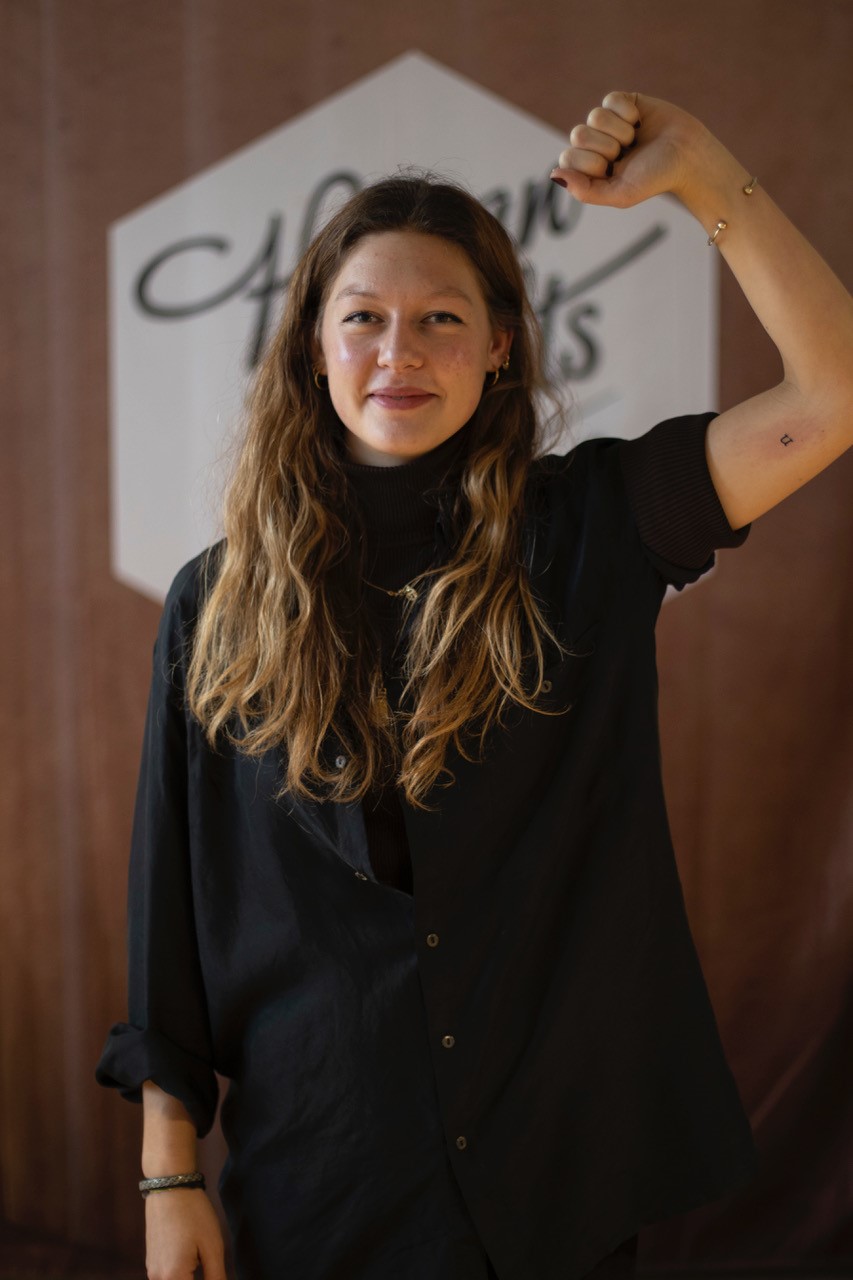
Photograph: Sander van Bussel
Human rights are not some far-off principles, human rights lawyer Laura Lundahl (26) says. Specialized in migration and asylum, she deals with human rights on a daily. “This initiative shows that we are all a small part of a bigger collective.” Unlike Snigdha, this is her first-ever tattoo which leads up to quite some nerves. “Luckily I was quickly convinced to participate because the permanent ink of the tattoo carries a tremendous symbolic meaning to me. A tattoo ties in with the idea behind human rights, because both of them are permanent and cannot be undone. The permanent ink of this tattoo symbolizes that for me”, she explains. “I am very proud to be a part of this project, which made it necessary to get my tattoo in a visible place. In this way, I hope it will spark connection and, most importantly, an on-going conversation.”
